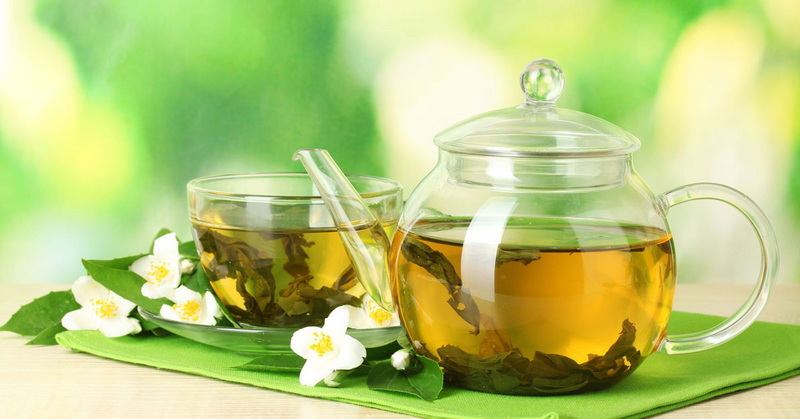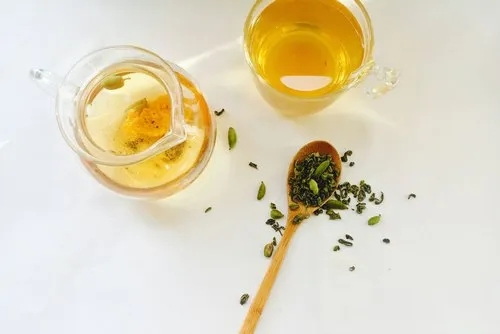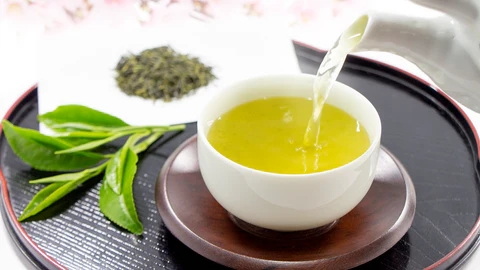Content Menu
● Introduction to L-Theanine and Chamomile
>> L-Theanine
>> Chamomile
● Mechanisms of Action
>> L-Theanine
>> Chamomile
● Comparative Effectiveness
● Additional Considerations
>> Dosage and Safety
>> Interactions with Other Substances
>> Lifestyle and Dietary Factors
● Practical Applications
>> Combining with Other Relaxation Techniques
>> Mindfulness and Meditation
>> Aromatherapy
● Conclusion
● FAQs
>> 1. What is L-Theanine?
>> 2. How Does Chamomile Work?
>> 3. Is L-Theanine Better Than Chamomile for Relaxation?
>> 4. Can I Use Both L-Theanine and Chamomile Together?
>> 5. Are There Any Side Effects of L-Theanine or Chamomile?
● Citations:
In the quest for natural relaxation aids, two popular contenders are green tea l-theanine and chamomile. While both have been praised for their calming effects, the question remains: is green tea l-theanine more effective than chamomile for relaxation? This article delves into the scientific evidence supporting the efficacy of both substances, comparing their mechanisms of action and effectiveness.

Introduction to L-Theanine and Chamomile
L-Theanine
L-theanine, an amino acid found primarily in green tea, has been extensively studied for its anxiolytic and relaxing properties. It is known to increase alpha brain waves, which are associated with a state of relaxation and reduced stress levels. Unlike sedatives, l-theanine promotes relaxation without inducing drowsiness, making it suitable for use at any time of the day. This unique property allows individuals to remain focused and alert while enjoying the benefits of reduced anxiety.
Chamomile
Chamomile, a herb commonly used in teas and supplements, is renowned for its calming effects. It contains apigenin, a flavonoid that binds to GABA receptors in the brain, promoting relaxation and reducing anxiety. Chamomile is often consumed as a tea before bedtime to aid in sleep, as its sedative effects can help improve sleep quality.
Mechanisms of Action
L-Theanine
L-theanine works by increasing alpha brain waves, which are indicative of a relaxed yet alert state. It also acts on GABA receptors, enhancing the effects of this neurotransmitter to reduce anxiety and promote relaxation. Additionally, l-theanine may regulate glutamate receptors, further contributing to its calming effects. This multifaceted action allows l-theanine to provide a balanced relaxation experience.
Chamomile
Chamomile's primary mechanism involves apigenin binding to GABA receptors, which helps reduce anxiety and promote relaxation. While effective for sleep and relaxation, chamomile's effects are generally more sedative compared to l-theanine. This makes chamomile an excellent choice for those seeking to improve their sleep quality.
Comparative Effectiveness
Studies suggest that l-theanine is highly effective in reducing stress and anxiety, with significant increases in alpha brain wave activity. While chamomile is beneficial for sleep and relaxation, its effects are more sedative and may not offer the same level of alert relaxation as l-theanine. The choice between these two substances often depends on whether one prefers a non-sedative relaxation aid or a sleep-enhancing supplement.
Comparison of L-Theanine and Chamomile
| Feature | L-Theanine | Chamomile |
| Mechanism | Increases alpha waves, acts on GABA and glutamate receptors | Binds to GABA receptors |
| Effectiveness | Promotes relaxation without drowsiness | Sedative effects, aids sleep |
| Usage | Suitable for daytime use | Often used before bedtime |

Additional Considerations
Dosage and Safety
- L-Theanine: Typically taken in doses ranging from 200 to 400 mg, l-theanine is generally safe with minimal side effects. High doses may cause stomach upset in some individuals.
- Chamomile: Chamomile tea is often consumed in the form of herbal tea, while supplements may vary in dosage. It is generally safe but can cause allergic reactions in rare cases.
Interactions with Other Substances
Both l-theanine and chamomile can interact with other substances, affecting their efficacy or safety. For example, l-theanine may enhance the effects of caffeine, while chamomile can interact with certain medications like blood thinners. It is crucial to consult a healthcare professional before combining these substances with other medications.
Lifestyle and Dietary Factors
Dietary factors and lifestyle choices can influence the effectiveness of these substances. A balanced diet rich in nutrients can enhance the absorption and efficacy of both l-theanine and chamomile. Regular exercise and stress management techniques, such as meditation or yoga, can also complement their relaxing effects. Additionally, maintaining a consistent sleep schedule and creating a relaxing bedtime routine can further enhance the benefits of chamomile.
Practical Applications
Combining with Other Relaxation Techniques
Both l-theanine and chamomile can be used in conjunction with other relaxation techniques to enhance their effects. For instance, practicing deep breathing exercises while taking l-theanine can amplify its calming effects. Similarly, combining chamomile with a warm bath or a calming essential oil like lavender can create a soothing bedtime routine.
Mindfulness and Meditation
Incorporating mindfulness and meditation into your daily routine can also enhance the benefits of these substances. Mindfulness practices help individuals become more aware of their thoughts and emotions, allowing them to better manage stress and anxiety. When combined with l-theanine or chamomile, these practices can lead to a more profound sense of relaxation and well-being.
Aromatherapy
Aromatherapy is another complementary approach that can be used alongside l-theanine and chamomile. Essential oils like bergamot and ylang-ylang have calming properties that can enhance the relaxing effects of these substances. Using a diffuser or applying these oils topically can create a calming environment conducive to relaxation.
Conclusion
While both l-theanine and chamomile are effective relaxation aids, l-theanine offers a unique advantage by promoting relaxation without inducing drowsiness. This makes it more versatile for use throughout the day. However, whether l-theanine is 60% more effective than chamomile depends on individual responses and specific needs. For those seeking a non-sedative relaxation aid, l-theanine may be preferable, while chamomile remains an excellent choice for improving sleep quality.

FAQs
1. What is L-Theanine?
L-theanine is an amino acid found primarily in green tea, known for its relaxing effects without causing drowsiness. It increases alpha brain waves and acts on GABA and glutamate receptors to promote relaxation.
2. How Does Chamomile Work?
Chamomile works by binding to GABA receptors in the brain, which helps reduce anxiety and promote relaxation. It is often used as a sedative aid for sleep.
3. Is L-Theanine Better Than Chamomile for Relaxation?
L-theanine offers a non-sedative form of relaxation, making it suitable for daytime use. Chamomile, while effective for sleep, has more sedative effects. The choice between them depends on individual needs and preferences.
4. Can I Use Both L-Theanine and Chamomile Together?
Yes, you can use both together. However, be aware that chamomile's sedative effects might complement l-theanine's relaxing properties, potentially enhancing sleep quality.
5. Are There Any Side Effects of L-Theanine or Chamomile?
Both l-theanine and chamomile are generally safe with minimal side effects. However, high doses of l-theanine may cause stomach upset in some individuals, while chamomile can cause allergic reactions in rare cases.
Citations:
[1] https://yamamotoyama.co.jp/en/blogs/column/reading258
[2] https://pmc.ncbi.nlm.nih.gov/articles/PMC4728665/
[3] https://pubmed.ncbi.nlm.nih.gov/25759004/
[4] https://pubmed.ncbi.nlm.nih.gov/31758301/
[5] https://pmc.ncbi.nlm.nih.gov/articles/PMC6836118/
[6] https://pmc.ncbi.nlm.nih.gov/articles/PMC5537891/
[7] https://artfultea.com/blogs/wellness/l-theanine-in-tea
[8] https://www.alzdiscovery.org/uploads/cognitive_vitality_media/L-Theanine-Cognitive-Vitality-For-Researchers.pdf
[9] https://www.medicalnewstoday.com/articles/324120
[10] https://www.nature.com/articles/s41598-024-59383-y






























